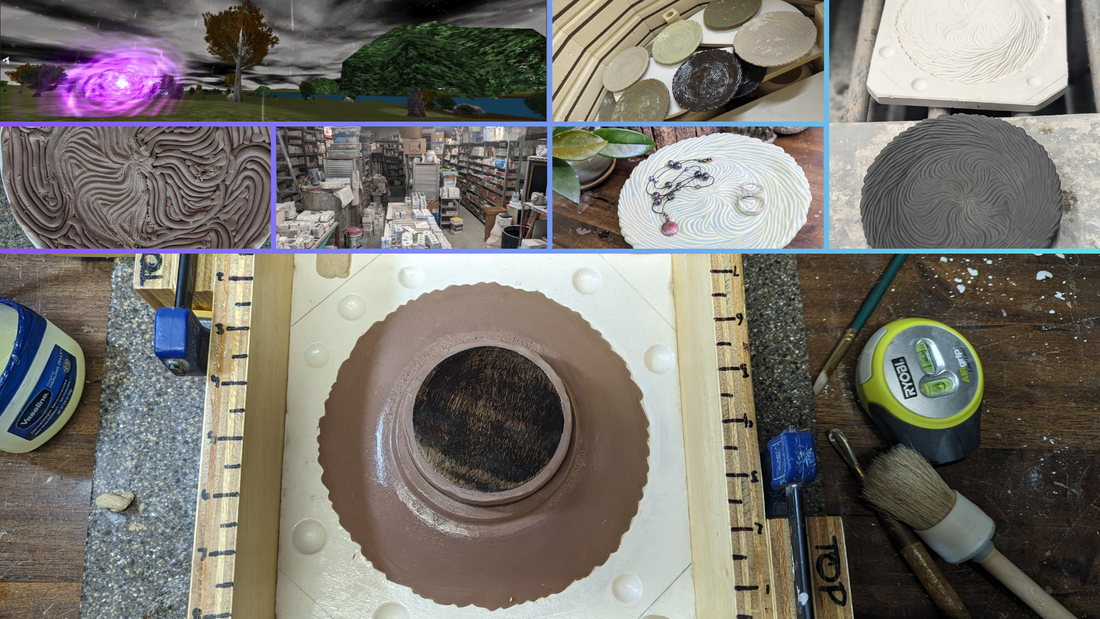How it's made by Mountain Mudworks:
If you've ever thought about pottery, you've definitely thought about an artist working muddy hands into a lump of clay atop a spinning wheel, pulling up the sides to create a bowl, mug, or vase.
That's not what we do here at Mountain Mudworks. Instead, we use an ages-old production process called 'slip casting'. In place of the lump of clay we use slip (same clay, just destabilized using chemistry to become a flowing liquid), and to replace the wheel, we use plaster molds for shaping. This allows us to use the same mold, to make the same object, over and over again. On the surface, this seems like a really simple version of making pottery; after all, anyone who can pour slip can make intricate pottery using molds, right?

The process is straightforward and easy to understand, and with the appropriate resources almost anyone can use this method to create all kinds of clay forms. In fact, it's so straightforward that as we went through the process the first few times it seemed like we were cheating somehow. As we gained experience we had our minds changed about that; nothing so demanding has ever been 'cheating'!
Like so many wonderful things, slip-casting is easy to understand and do, but nearly impossible to master, and full of distracting possibilities.
----
Molds make it.
Since our humble beginnings in Uncle Lex's basement studio, I've been fascinated by the plaster molds that we use. Not in the way that Lex is; with a mind-boggling collection of over 100,000 molds ranging from pie plates to nativity sets, Lex will never run out of new things to pour and admire!  No, I've been fascinated with what I couldn't find. Among the stacks there in the basement studio were seven or eight dusty molds that could be the main impetus of MMW. I'm of course talking about the first watering spike molds that we were introduced to. The problem was, despite the huge number of molds at hand, only a few were these amazing little inventions!
No, I've been fascinated with what I couldn't find. Among the stacks there in the basement studio were seven or eight dusty molds that could be the main impetus of MMW. I'm of course talking about the first watering spike molds that we were introduced to. The problem was, despite the huge number of molds at hand, only a few were these amazing little inventions!
 No, I've been fascinated with what I couldn't find. Among the stacks there in the basement studio were seven or eight dusty molds that could be the main impetus of MMW. I'm of course talking about the first watering spike molds that we were introduced to. The problem was, despite the huge number of molds at hand, only a few were these amazing little inventions!
No, I've been fascinated with what I couldn't find. Among the stacks there in the basement studio were seven or eight dusty molds that could be the main impetus of MMW. I'm of course talking about the first watering spike molds that we were introduced to. The problem was, despite the huge number of molds at hand, only a few were these amazing little inventions!
When we started cutting off the spike portion and attaching it to other small sculptures to create new and unique watering spikes it was a very short proverbial walk to making a simple open-pour mold for our spikes. Armed with some plaster, some buckets, and some spikes I began to experiment. With patience, research, and practice I eventually became confident enough to begin trying my hand at more complicated two-part molds. A while later I would learn how to make 'Mother Molds' to reproduce these carefully created multi-piece plasters.
---
Lets make this mold!
After all that learning and all that time is really where this story begins. One night, while playing my favorite video game, Asheron's Call, I noticed that the main conveyance in the game, portals, were flat and round; a lot like plates. The idea stuck in my brain and I found myself idlily shaping clay coils into spirals, so I choose to actively make my dream of a portal shaped plate a reality.
Join me as I detail how I made this thing, some of the tricks I knew before getting started, and what lessons I learned along the way!
---

Part 1: Shaping Up

